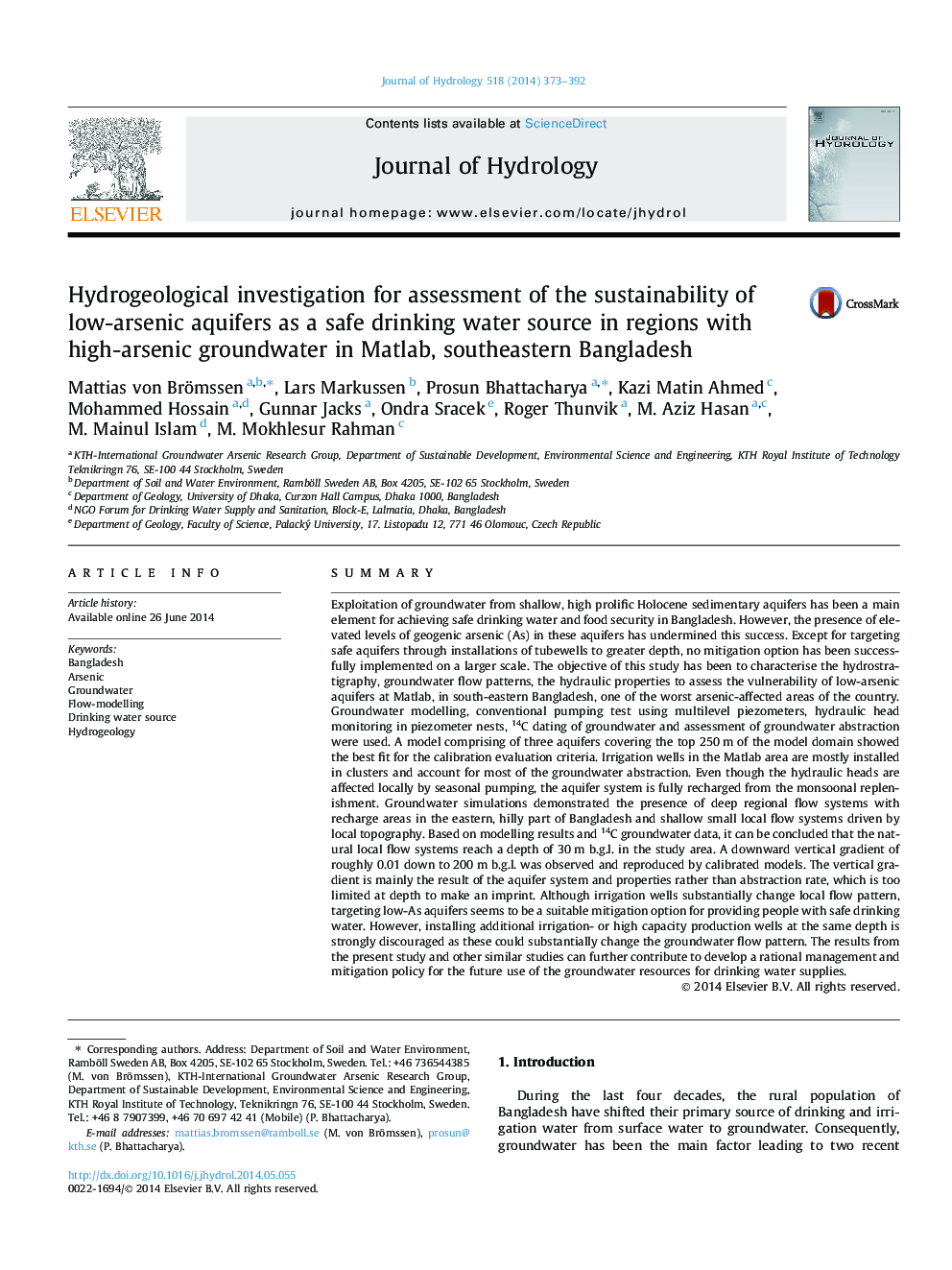| کد مقاله | کد نشریه | سال انتشار | مقاله انگلیسی | نسخه تمام متن |
|---|---|---|---|---|
| 4575967 | 1332900 | 2014 | 20 صفحه PDF | دانلود رایگان |

• The risk of cross-contamination of deep aquifers by As in Bangladesh was assessed.
• Groundwater flow simulations identified regional and local flow-systems.
• Cross-contamination is likely to be limited to areas with many irrigation wells.
• When groundwater at depth has low As, it can be used for drinking water purposes.
• However, installation of deep irrigation wells is strongly discouraged.
SummaryExploitation of groundwater from shallow, high prolific Holocene sedimentary aquifers has been a main element for achieving safe drinking water and food security in Bangladesh. However, the presence of elevated levels of geogenic arsenic (As) in these aquifers has undermined this success. Except for targeting safe aquifers through installations of tubewells to greater depth, no mitigation option has been successfully implemented on a larger scale. The objective of this study has been to characterise the hydrostratigraphy, groundwater flow patterns, the hydraulic properties to assess the vulnerability of low-arsenic aquifers at Matlab, in south-eastern Bangladesh, one of the worst arsenic-affected areas of the country. Groundwater modelling, conventional pumping test using multilevel piezometers, hydraulic head monitoring in piezometer nests, 14C dating of groundwater and assessment of groundwater abstraction were used. A model comprising of three aquifers covering the top 250 m of the model domain showed the best fit for the calibration evaluation criteria. Irrigation wells in the Matlab area are mostly installed in clusters and account for most of the groundwater abstraction. Even though the hydraulic heads are affected locally by seasonal pumping, the aquifer system is fully recharged from the monsoonal replenishment. Groundwater simulations demonstrated the presence of deep regional flow systems with recharge areas in the eastern, hilly part of Bangladesh and shallow small local flow systems driven by local topography. Based on modelling results and 14C groundwater data, it can be concluded that the natural local flow systems reach a depth of 30 m b.g.l. in the study area. A downward vertical gradient of roughly 0.01 down to 200 m b.g.l. was observed and reproduced by calibrated models. The vertical gradient is mainly the result of the aquifer system and properties rather than abstraction rate, which is too limited at depth to make an imprint. Although irrigation wells substantially change local flow pattern, targeting low-As aquifers seems to be a suitable mitigation option for providing people with safe drinking water. However, installing additional irrigation- or high capacity production wells at the same depth is strongly discouraged as these could substantially change the groundwater flow pattern. The results from the present study and other similar studies can further contribute to develop a rational management and mitigation policy for the future use of the groundwater resources for drinking water supplies.
Journal: Journal of Hydrology - Volume 518, Part C, 10 October 2014, Pages 373–392